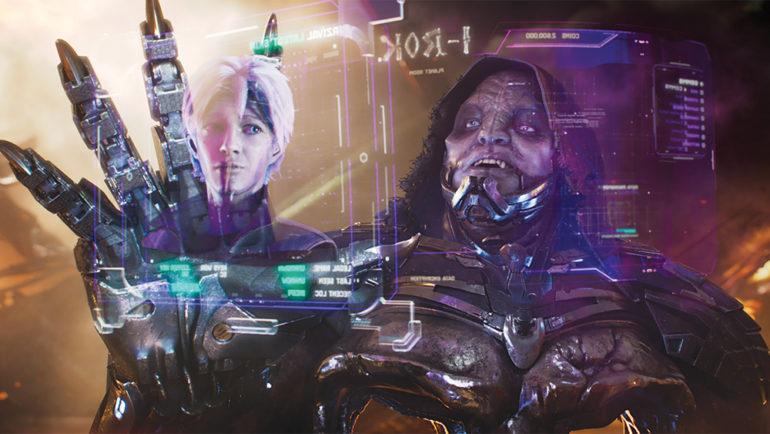‘Ready Player One’ Integrated Familiar and New Characters for Spielberg’s Take
By Karen Idelson
LOS ANGELES (Variety.com) – In helmer Steven Spielberg’s “Ready Player One,” a vast group of familiar characters and those created for the film had to be integrated into one story and some had to travel between two worlds. Visual-effects supervisor Roger Guyett knew he’d be working with multiple styles and sources to pull it off.
Original characters including the robot from “The Iron Giant” would have to be sourced and then brought into the world that Spielberg wanted to create for the film. Guyett, who also worked with the helmer on “Saving Private Ryan,” went about gathering information about these classic characters from many different places. Sometimes he would be given concept art, a 3D model or other designs. Overall, he had his pick of the best versions of those characters that were still available since their original creators wanted the designs to be as similar to the original creatures as possible and they wanted to maintain a certain artistic integrity as well.
“This was a big project,” says Guyett, a five-time Academy Award nominee for vfx. “But knows exactly what he’s looking for so you know what he wants at all times. The interesting thing is when you talk to Steven it’s all about performance and with someone like Steven, who has made some of the greatest movies of all time, he really understands how you want your characters to come across in that storytelling process. So, fundamentally, we wanted to make sure that what we were seeing on that screen was the best interpretation of that performance in that moment.”
For the characters based on actors in the film, Guyett had to undertake the complex process of creating a version of each actor that would move through the Oasis, a place that’s limited only by your imagination. Since each actor’s face is unique, the solution for that problem was unique to each actor.
Guyett also used virtual reality to give Spielberg an opportunity to make sure the integration of all the characters — along with the environments — was coming together they way it was originally imagined. The helmer would put on VR glasses and essentially walk through his movie and give feedback about what was working and what needed to be changed.
“It was great to be able to do that because we’d be able to then go back and make the changes from his comments,” says Guyett. “We were working with a lot of different things so that feedback helped. The tracking on faces is very much tailored to each person because they move their faces in different ways. So you’re placing the tracking dots on them differently from person to person. You have to bring them in to do tests to make sure you’re tracking the right things to make them look as real as they can when you take them into the Oasis. You have to be very careful because you don’t want to end up in that place, in the uncanny valley, where things don’t look quite right.”

